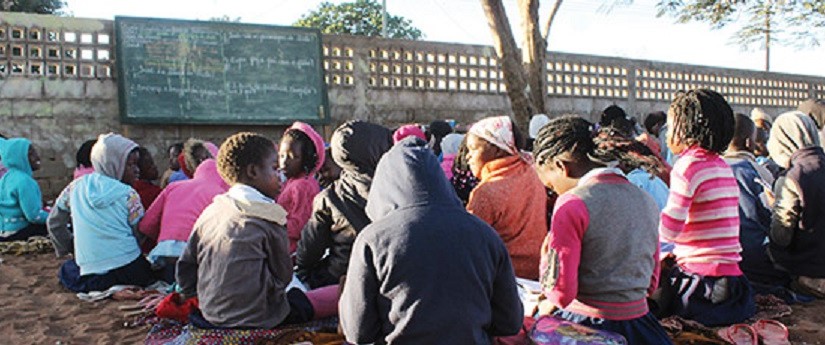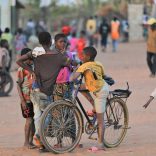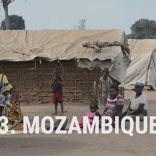Mozambique confirms two more mpox cases - in Maputo province
600,000 Mozambican children still study out of doors – O País

O País
Three years ago she did not know what it was to sit at a school desk. In the last 36 months she has studied at two schools and at she both attended classes without roofs or walls. Because of the conditions under which she studies, the ‘capulana’ has become part of her school uniform. Without a ‘capulana’, sitting on the ground is that much harder.
Her name is Julieta Zunguza. She is 11 years old and attends Grade 5 at the Fourth of October Primary School, one of the few in the Xinonanquila neighbourhood in Maputo province’s Boane municipality where she lives.
The school has only six rooms for 24 classes, meaning that 11 classes study outdoors and there are only desks for teachers. “In Matola, I studied sitting on the ground from Grade 2. This year we live in Boane, but here (at school) there are few rooms,” Julieta says shyly.
In fact, it is not only the classrooms that are missing – there is not even a single desk for the 1,320 Grade 1 to 7 students. The 50 that the school received in 1998, when it first opened, were vandalised along with two classrooms due to the absence of a perimeter wall.
There are thousands of classes like Julieta’s across the country. Mozambique has 600,000 children sitting on the ground to learn and holds 15 thousand classes in the open. In fact, in the last four years the number of classes held in the open have risen from 13,000 to about 16,000.
Areas with expanding populations like Matola are classified as critical by the Ministry of Education. There, 766 classes are being held in the open.
The 12 de Outubro Primary School sits in the busy neighbourhood of Khobe, less than 20 kilometres from the largest industrial park in the country. The school has about five thousand students but only 14 classrooms. So, of its 68 existing classes, 34 study under the trees.
That’s where Leocadia Custodio teaches a Grade 2 class with over 60 students. A teacher for more than 14 years, she has worked with dozens of children sitting on the floor in capulanas, on stones or building blocks or in small plastic chairs. “To write things down, some of the pupils use the back of the one sitting in front of them. When you teach a class, you note the difference between indoors and outdoors,” the teacher says.
Studying is difficult enough normally but even worse in bad weather.
Nayara is one of the most cheerful pupils in the class, but her joy simply masks the discomfort. “I do not like the wet. When it rains we have to cover up with a ‘capulana’ and study in other classes,” he says. Looking out for a shady spot is normal, and on extra-windy days, classes cannot take place at all.












Leave a Reply
Be the First to Comment!
You must be logged in to post a comment.
You must be logged in to post a comment.